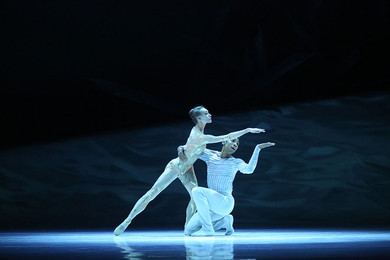Main Stage
World premiere: Grimaldi Forum Monaco Choreography: Jean-Christophe Maillot
Jean-Christophe Maillot brings us an aesthetically-pleasing and ferocious psychoanalytical interpretation of this famous fairy-tale, tapping into our childhood memories, fears and desires. The feats that mark Sleeping Beauty's story mirror the rites each woman must go through throughout her life. Perrault understood this only too well, and in turn, the choreographer has managed to break through the sugar-coated casing Disney previously used in handling the tale. The lesser-known second half of Perrault’s story is brought to the fore, in which Sleeping Beauty awakens from her slumber and her marriage to the Prince leads on to further exploits. The second part of the fairy-tale is dark and terrifying: now Queen, the Princess and her children are threatened by her Wicked Step-Mother, the Ogress Maleficent. Maleficent is a symbol of pure evil, and is one of the most emblematic characters of Jean-Christophe Maillot's repertoire, the perfect embodiment of the sheer terror contained within this story. "Maleficent is like a magnet, sucking in all of our fears and taboos. I created an androgynous, ambiguous being that is far from a straightforward symbol, and that might be a potential partner for Sleeping Beauty. Although the character embodies evil, evil is nevertheless difficult to define. My ballets always reject Manichaeism, the concept of evil versus good." | ||||||||||


